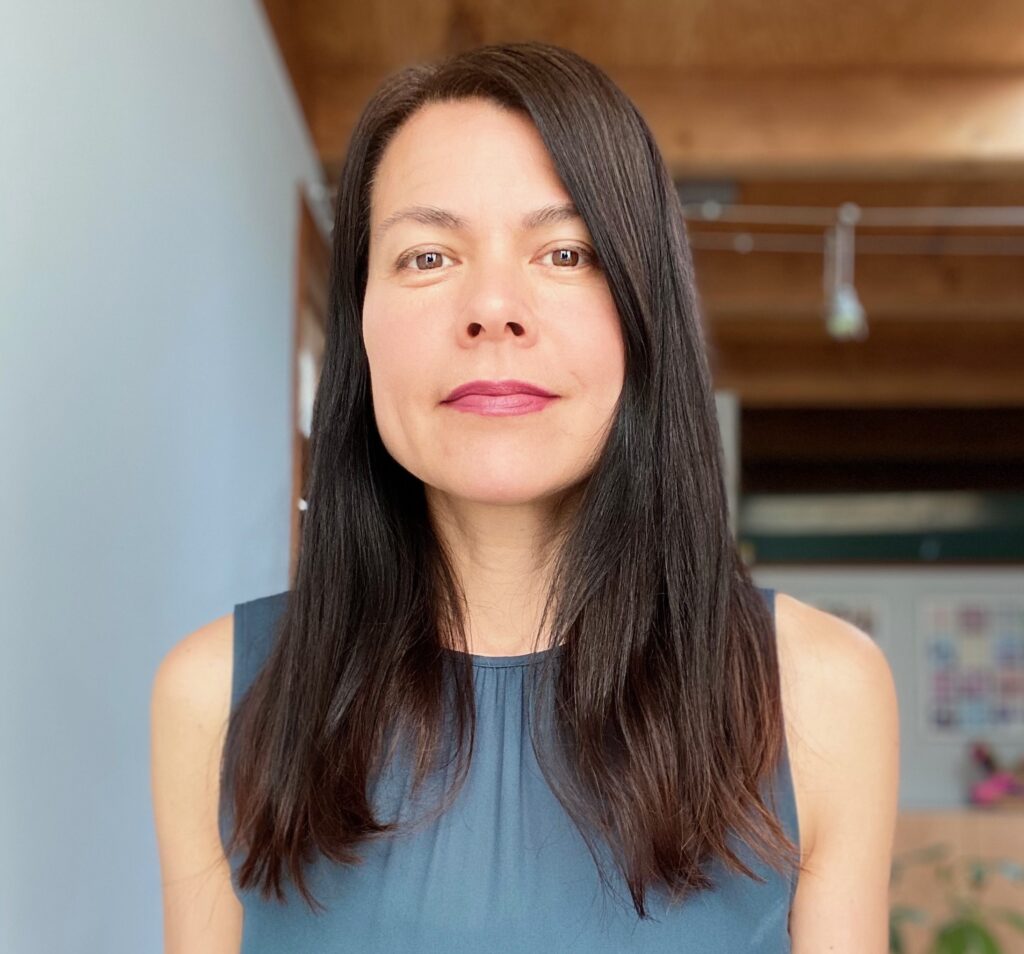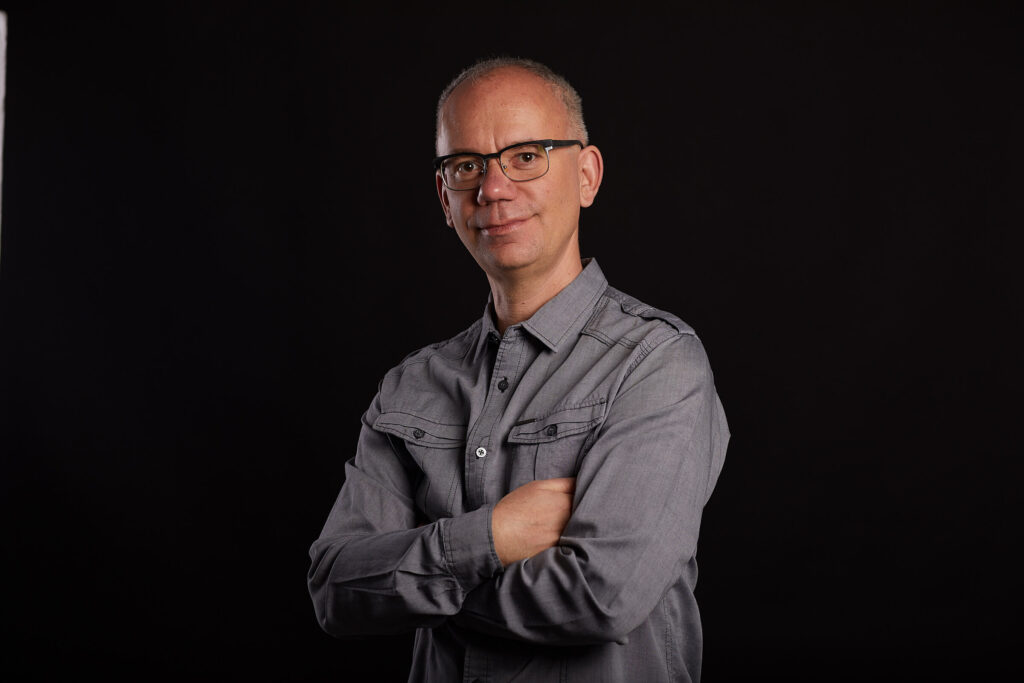News & Articles
Working at Color: A Conversation with Head of Design, Joanie McCollom
Color

If you visit Joanie McCollom’s LinkedIn profile, the first sentence you’ll read is, “Well-designed products start with diverse teams empowered to do human-centered work.” Joanie has made it her mission to lead the design efforts at Color with this directive in mind, and has assembled a world-class team of researchers, designers, technologists, and program operations–all working to create inclusive product experiences that help people gain access to essential health services.
We recently had the opportunity during Women’s History Month to interview Joanie about her career path, her thoughts on the challenges and opportunities for women in technology, and how her team is supporting Color’s Diversity and Inclusion initiatives by delivering human-centric, inclusive digital experiences and products to customers.
What brought you to Color?
I’m at Color because I’m interested in genetics and healthcare, but also because as a start-up we’re at a rare point in our growth, where we need to move and scale quickly. Anything is possible. I want to work with urgency to deliver essential services that impact millions of people by doing what I do best: creating the foundations for a human-centered practice. This moment at Color is the best time and place to do really innovative product work that’s grounded in equity.
That said, there’s a bit of a backstory to how I discovered Color. It was August 2, 2020. COVID-19 tests were hard to come by, and results could sometimes take up to 19 days. I went online at 9:18am, managed to get a Color appointment for 9:30am, and completed the roundtrip journey through the Embarcadero site in San Francisco. I was back home in less than an hour from start to finish. And…I received my results the very next day. The whole thing was absolutely seamless. Like, crazy good. I ended up booking an appointment for my daughter later that day. We repeated the whole thing. Once again, seamless. Three months later, when I saw an opening for Head of Design at Color, I remember thinking, I want to be on that team.
That’s what brought me to Color, but if you were to ask me what keeps me here, I’d say it’s the team. I’m surrounded by supportive, committed, and capable people who get it done.
What barriers do you see women facing in society today?
I’ve studied, experienced, and witnessed inequity, from when I earned degrees in Feminist Studies and Anthropology to navigating my own career (read Women in the Workplace) and eventually enabling others through hiring and career advancement. I’ve also learned a lot from people who’ve shared their experiences with me.
Generally speaking, women face double standards, exclusions, increased obligations, and a lack of recognition for their contributions. In the end women work harder, are undervalued, and are likely to be shut out of opportunities. These are facts.
Inequity plays out everywhere. It’s in every action that reiterates the status quo, from walking into the Women’s room to failing to make eye contact. We need to change the status quo, but that’s risky business. People who fight for equity do so at a personal and professional cost–and that’s another very real barrier.
As a woman coming up in the high-tech industry, have you encountered any barriers, and how did you overcome them?
Absolutely. Everyone experiences barriers, including those who benefit from them. Some of my experiences are textbook examples of barriers, such as being paid less, labeled “aggressive,” and asked to represent “women” when I’m the only woman invited to a meeting. I’ve felt vulnerable and lonely as a single working mom. But, for example, I speak English fluently. I am an unwitting but very real beneficiary of language barriers. Luckily, as I’ve advanced in my career, I’ve felt more comfortable being vocal and driving change, in part because I’m at a place where I’m better able to withstand the cost.
As for barriers…I don’t think they’re something that can be overcome. They just get moved around, and new ones can suddenly appear. Overcoming barriers really means being vigilant by constantly working to see and address them. Anti-bias training helps provide some awareness, but it takes unswerving collaboration and commitment to mitigate their impact.
Who inspires you?
I’m inspired by Gen Z, who seem most comfortable challenging gender binaries. I’m inspired by people, such as Geena Davis, who use their power to learn, share, and incite change. I’m watching the confirmation hearings of Judge Ketanji Brown Jackson and feeling inspired. I’m inspired by my boss, Claire Vo, who is a model for how you lead with transparency and trust. I’m inspired every day by the people on my team, who actively support each other’s growth. I’m inspired by my family–a long line of unruly women–who have pushed against norms and assumptions. And I’m inspired by the everyday acts of people I don’t know but am indebted to for their contributions to real and meaningful change in the world.
What connections do you see between your background in anthropology and the work you’re doing at Color?
Curiosity. I would define anthropology as a discipline that fosters wonder by looking at something from an unfamiliar angle. Ethnographies of other places are really ways to recognize our own assumptions and unmarked categories. An ethnographic approach is helpful in product design because it can help us recognize assumptions that might exclude people, such as having a computer and access to the internet.
I love research. I love asking questions and being surprised. Beyond product design, I think this approach has helped me as a leader to learn from my team and the people around me. At Color, we deliver products, but we’re also creating this company called Color. It’s a place–a culture–that we inhabit and shape. It’s exciting as an anthropologist to participate in the making of a place. It’s like reverse archaeology. Instead of reconstructing and describing what was, we’re building and defining what could be.
How can we support and empower women interested in a career in technology, and specifically, product design?
I recommend that women go after what they want by leaning into their strengths and focusing less on what they think are their shortcomings. I recommend reaching out to people and seeking advice. I recommend supporting other people’s journeys because paying it forward is real.
If you are in a position to make yourself available to others, please do. For the last two years, I have offered to meet with anyone who wanted to chat about their career. Even though I intended to share my experience and expertise, I’ve learned from each person that I’ve met. Those conversations make me a better leader.
For people in a position to recruit and hire, we can invest in people even if they’re not yet on our team. I’ve interviewed people new to interviewing, who have never been on the other side of the table. Some aren’t sure what to present or how best to answer questions. I’ll tell them everything about the process and what we’re looking for. Full transparency. I’ll even give them my email address. I’ll look at drafts or help them with a practice run. Working together to land the job is the best way to assess a candidate’s potential to succeed and grow, as well as create a truly inclusive and welcoming environment. Even if the candidate doesn’t get the job, we’re equipping them for their next interview somewhere else.
If you’re in a position to assess talent, I recommend that you focus primarily on filling gaps on the team instead of holding candidates to the same criteria as everyone else on the team. While the latter may feel more fair, you’re at risk of hiring the same people over and over again. If you focus on what’s missing, you can start to see how differences make the team stronger. Ultimately, this approach empowers all people, including women.
Finally, if you’re in a position to create opportunities, I recommend investing in channels that tap into talent that might go unrecognized. Jessa Bartley-Matthews led the effort to create our fellowship program, which focuses on people seeking to transition into design, not new grads. Fellows get hands-on experience and work on projects that can anchor their portfolio, which is essential to landing a job. We’re now starting with our second cohort in April 2022 and plan to continue.
Why is it important to have diversity in design, and how is Color designing inclusivity into its offerings?
At Color, we deliver essential healthcare services for everyone, but when you design for everyone, you are likely excluding people, including those with the greatest need. There is no one-size-fits-all solution. It takes intention to recognize and affirm the diversity of people’s lived experiences.
We’ve benefitted from valuable partnerships with public health agencies, where health equity is front and center. We’ve also engaged in a meaningful collaboration with the National Institutes of Health on All of Us, an innovative initiative to create one of the most diverse genetic datasets in history. These engagements have pushed us to do some of our most challenging work.
To meet the challenge, the design team follows a human-centered approach. We start by thinking about how our products fit into people’s lives. For example, we’ve added a barcode scanning feature that makes self-administered COVID-19 testing available to blind people. Our design technologists are committed to accessibility, such as optimizing our product experiences for screen readers. Meanwhile, our content designers adhere to reading level thresholds that increase comprehension and support improved translations. Our content operations manager participates in all of our design activities so that we anticipate localization from the very start. We also have amazing researchers looking for opportunities to better serve communities. In addition, Kari Hodges has done something every design team should do: extend our expertise by forming a medical equity working group that gathers insights from across the company, from field operations to genetic counselors. Finally, shout out to Brynda Tsai, our design program manager focused on inclusion. Her work enables everyone else. It truly takes a village to design for inclusion.
Watch more employee profiles to learn about the people who work at Color and check out our current openings, including on Joanie’s team!

